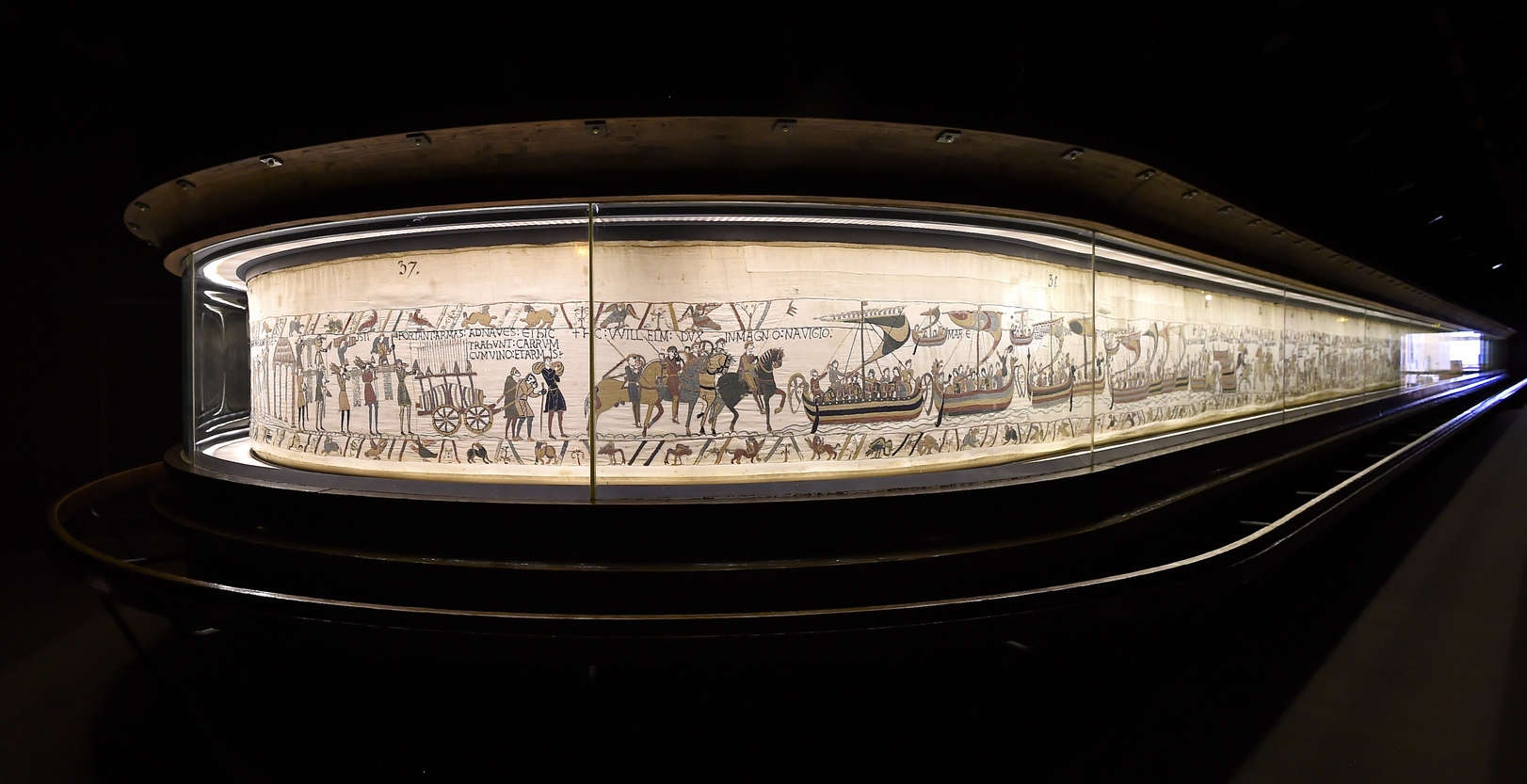A petition asking France not to lend theBayeux tapestry to England. It was launched, on Change.org, by Didier Rykner, longtime editor of La Tribune de l’Art, one of France’s most-watched art magazines, and in about a month it has already reached nearly 50,000 signatures. The loan of the tapestry, a very important 70-meter-long 11th-century work that depicts the Norman invasion of England in 1066 and is kept at the Bayeux Tapestry Museum in Normandy, was was granted following an agreement signed between France and England, formalized by British Prime Minister Keir Starmer and French President Emmanuel Macron, and stipulates that from September 2026 until July 2027, the Bayex Tapestry will be displayed at the British Museum.
Against the loan, announced in early July, was Rykner himself, who shortly after the announcement of the cultural exchange wrote a long editorial in La Tribune de l’Art explaining the reasons for his opposition. Rykner, immediately at the beginning of his article, reports the opinion of Antoine Verney, director of the Bayeux Museums, that “the loan of the work is considered by all partners to be inconceivable, in light of what is known about its current state of preservation.” And for Verney, the loan is nothing more than a “publicity stunt” for which the tapestry should not be put at risk, precisely because of its fragility.

At the moment, however, the loan is subject to a technical plan that would have to assess precisely the tapestry’s preservation and display conditions . This is a project that has been mobilizing an international committee of conservators, art historians and restorers specializing in textile artifacts for the past four years, but a detailed report on the state of conservation has not yet been drawn up, which will have to translate into a specification for possible conservation, if not restoration, work. “We can therefore see,” Rykner writes, that the curator “does not commit to a future loan, although he does not rule it out. Others are even more cautious about the possibility of the tapestry traveling.” Such is the case with restorers Isabelle Bédat and Béatrice Girault, who worked on this work during the last conservation work it underwent, in 1981-1983. Bédat told Rykner that if the work, which is a thousand years old, has come to us in apparently good condition, it is essentially because it has hardly ever been moved and has always been kept in the cathedral, out of the light, and exposed only about ten days a year. The work has not been restored (Antoine Verney confirmed that the last restoration dates back to the 19th century): in fact, the 1981-1983 intervention was not a restoration in the strict sense. Girault even categorically rules out the idea that the tapestry can travel: “Every time we handle it, we lose some material and therefore some resistance, whether it is the linen of the base fabric or the wool of the embroidery. The problem is not age: it’s size. We can’t carry it like a painting in a crate. We can’t roll it up because it’s too thin, and that causes creases and tension [...] Embroidery itself doesn’t need to be consolidated, but the slightest friction, the folds of the world cause small fibers to come loose.” Not even a restoration, in his view, can rule out risk-free transport. “It is the whole material that is fragile in itself and requires as little handling as possible,” he adds.
Then there is another point: such a loan would set a precedent. It would in fact be a political loan, and on the basis of this assumption it would then become difficult to refuse for some who might demand the tapestry what has been accepted for others. “All this is dangerous for the work,” the two restorers close. “It is therefore obvious that what simple common sense suggests to any art lover,” says Rykner, “which is that one does not move without good reason a 70-meter-long fabric that is one of the most valuable works of humanity, is an observation shared by professionals. The idea has been launched, they should be given full say and allowed to decide, in complete independence, on the feasibility or otherwise of this loan.” In essence, the loan hypothesis is branded as “not absurd in principle, but irresponsible in practice. We should not restore a work that does not need it in order to make it transportable. Nor should we use the most valuable and fragile works of art for diplomacy.”
In the text of the petition, Rykner also adds that the indifference of politics to the condition of the Bayeux tapestry is condition enough to pose serious threats to the work. The restorers, the petition reads, “are categorical: in addition to the usual transport risks (no accident can ever be ruled out), the alterations already observed are likely to worsen and new damage could occur. The risks identified are numerous and highly probable: tears, extension of existing tears, falling material, breaking of weaving threads.” The petition therefore asks President Macron to abandon this project. Those who wish to join the signatures can do so from theappropriate link.
 |
| No to the loan of the Bayeux tapestry to England: a petition gathers nearly 50 thousand signatures |
Warning: the translation into English of the original Italian article was created using automatic tools. We undertake to review all articles, but we do not guarantee the total absence of inaccuracies in the translation due to the program. You can find the original by clicking on the ITA button. If you find any mistake,please contact us.